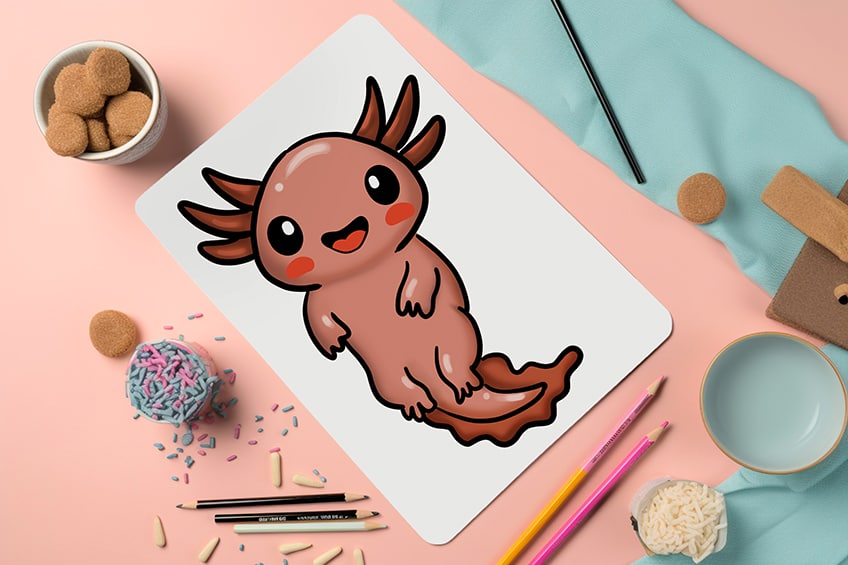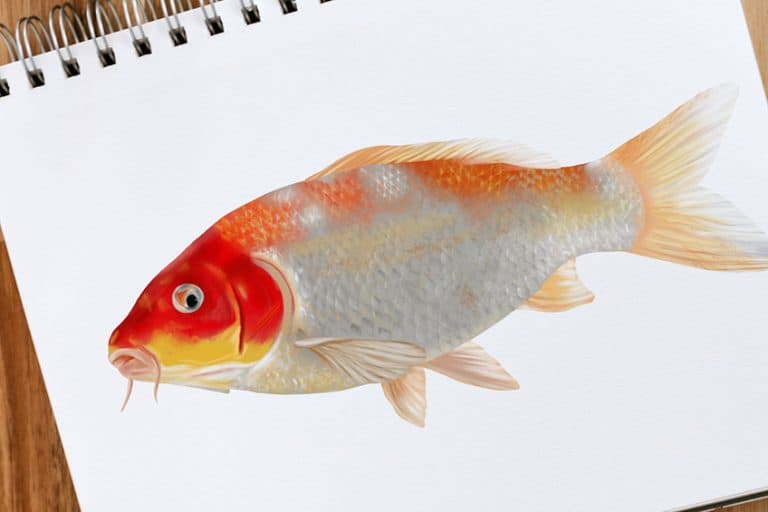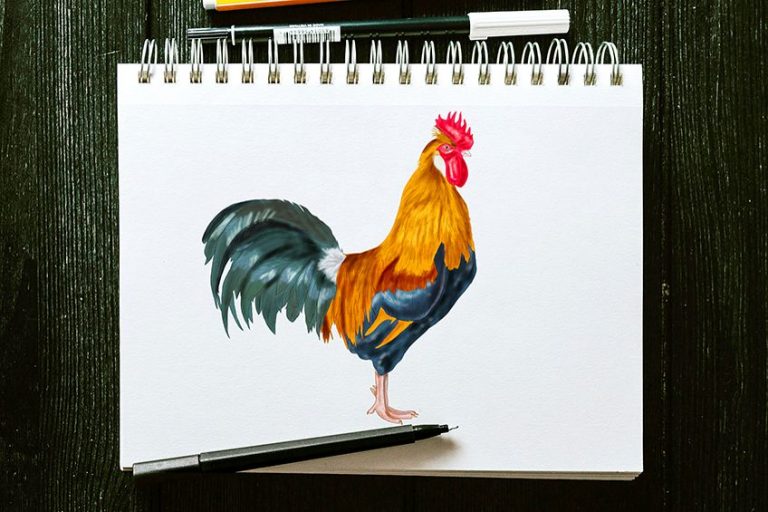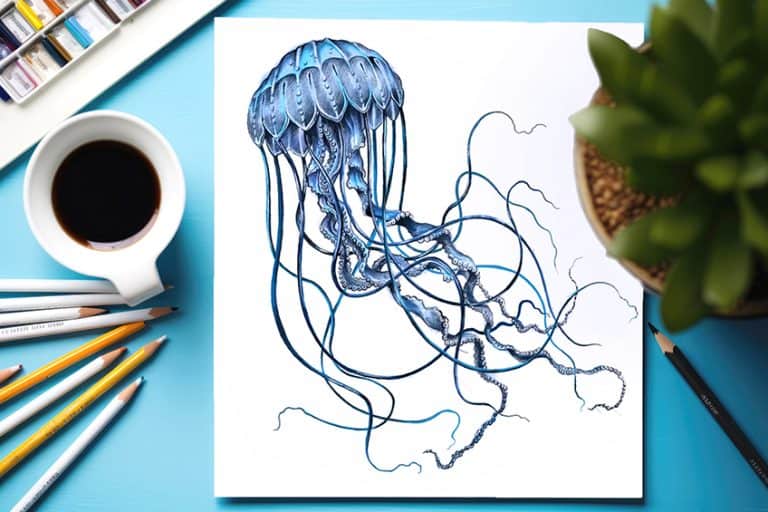How to Draw an Axolotl – A Step-by-Step Drawing Guide
Join our easy step-by-step tutorial to draw an axolotl, an enchanting aquatic creature known for its unique appearance and youthful form. Suitable for all skill levels, our guide will help you capture the axolotl’s charm in every pencil stroke, turning this drawing experience into a fun and accessible creative adventure.
Table of Contents
- 1 Underwater Wonders: Mastering an Axolotl Sketch
- 1.1 Step 1: Begin Your Easy Axolotl Drawing
- 1.2 Step 2: Draw the Axolotl’s Body
- 1.3 Step 3: Outline the Head on Your Axolotl Sketch
- 1.4 Step 4: Draw the Horns
- 1.5 Step 5: Continue to Outline the Axolotl’s Body
- 1.6 Step 6: Draw the Hands and Legs
- 1.7 Step 7: Add the Dorsal Fin to Your Axolotl Drawing
- 1.8 Step 8: Draw the Tail
- 1.9 Step 9: Begin to Color Your Easy Axolotl Drawing
- 1.10 Step 10: Continue With the Secondary Color Coat
- 1.11 Step 11: Color the Facial Features
- 1.12 Step 12: Shade Your Easy Axolotl Drawing
- 1.13 Step 13: Highlight the Axolotl
- 1.14 Step 14: Shade the Horns and Dorsal Fin
- 1.15 Step 15: Complete the Facial Features on Your Axolotl Sketch
- 1.16 Step 16: Finalize Your Easy Axolotl Drawing
- 2 Frequently Asked Questions
Underwater Wonders: Mastering an Axolotl Sketch
Hey there! Exciting news – you’re about to dive into the world of drawing, and guess what? We’ve got something special for you – a step-by-step tutorial on drawing the cutest axolotl! Whether you’re a seasoned artist or just starting out, our easy-to-follow guide is tailored just for you. Get ready for a delightful journey as we unravel the charm of these aquatic wonders together. Can’t wait to see your masterpiece unfold! Let the creative adventure begin!
Join us and learn how to draw an Axolotl the easy way! The below collage covers the very basic elements of drawing an Axolotl including the entire coloring process.
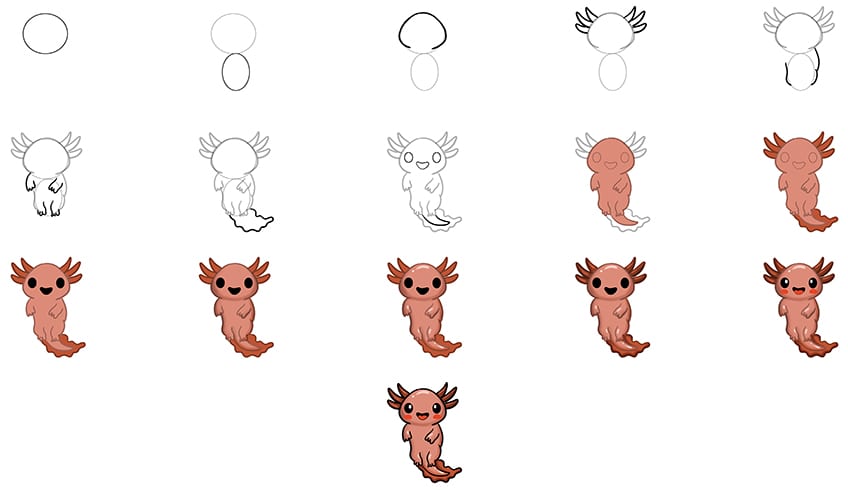
Step 1: Begin Your Easy Axolotl Drawing
Start by drawing an oval shape to represent the axolotl’s head as you embark on the journey to learn how to draw an axolotl.

Step 2: Draw the Axolotl’s Body
Below the head, draw a vertically standing oval shape to represent the main body. This should be smaller than the head.

Step 3: Outline the Head on Your Axolotl Sketch
Begin outlining the axolotl head shape by using the construction lines drawn earlier to aid you in the process.
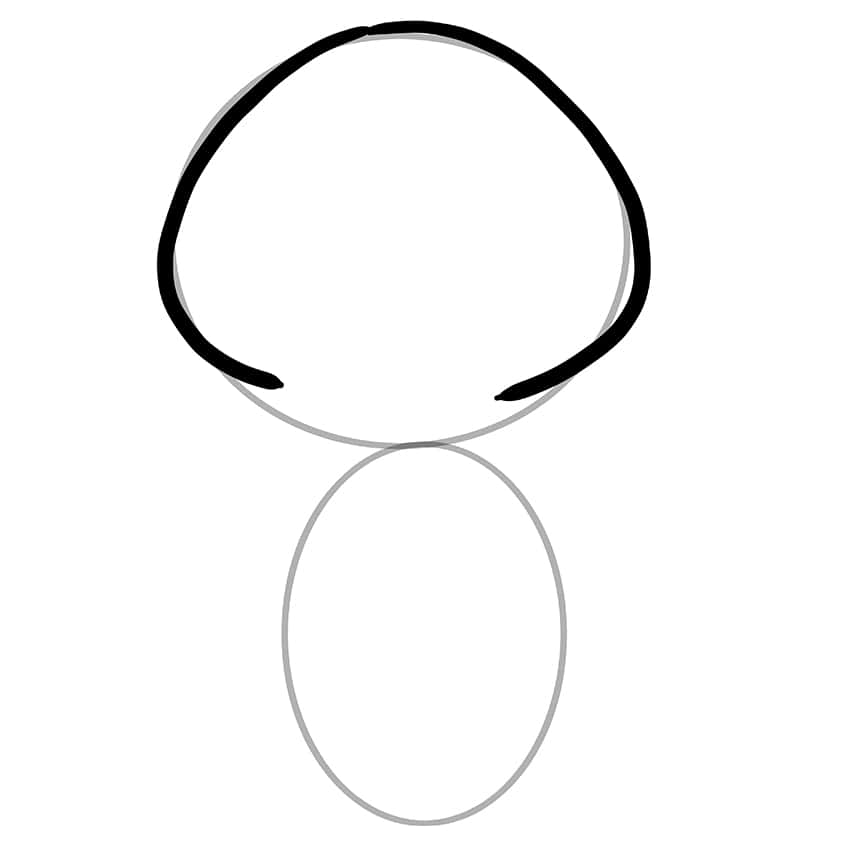
Step 4: Draw the Horns
Sketch three upward-facing horns on each side of the head.
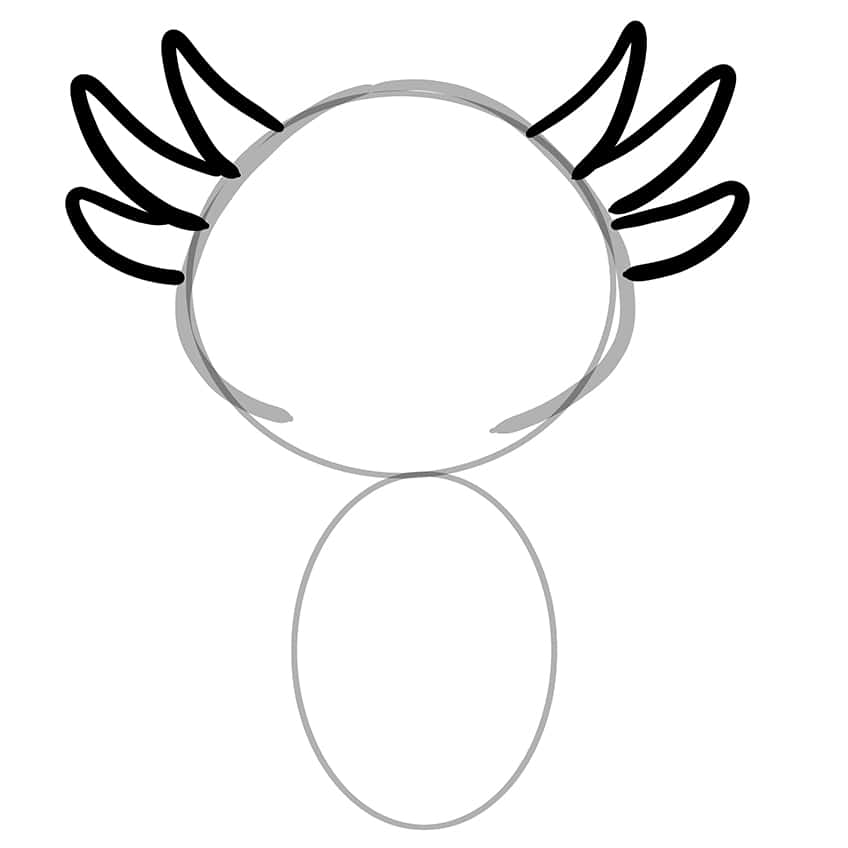
Step 5: Continue to Outline the Axolotl’s Body
Continue to outline the main body of the axolotl.
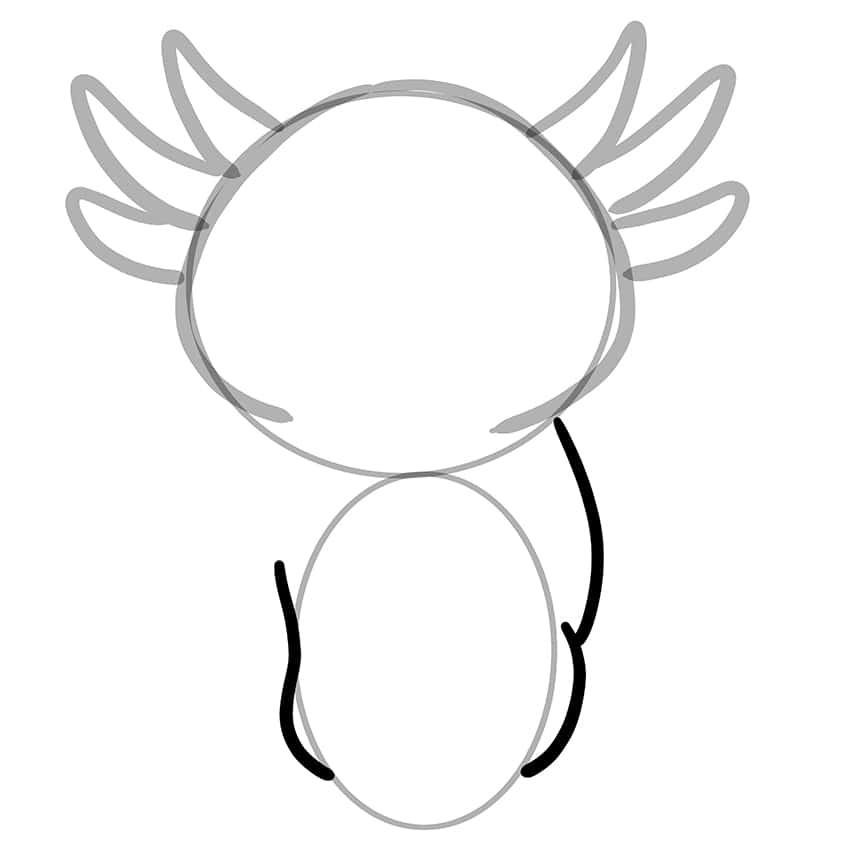
Step 6: Draw the Hands and Legs
Attached to the main body, draw the two upper hands and two lower legs, with the feet visible.
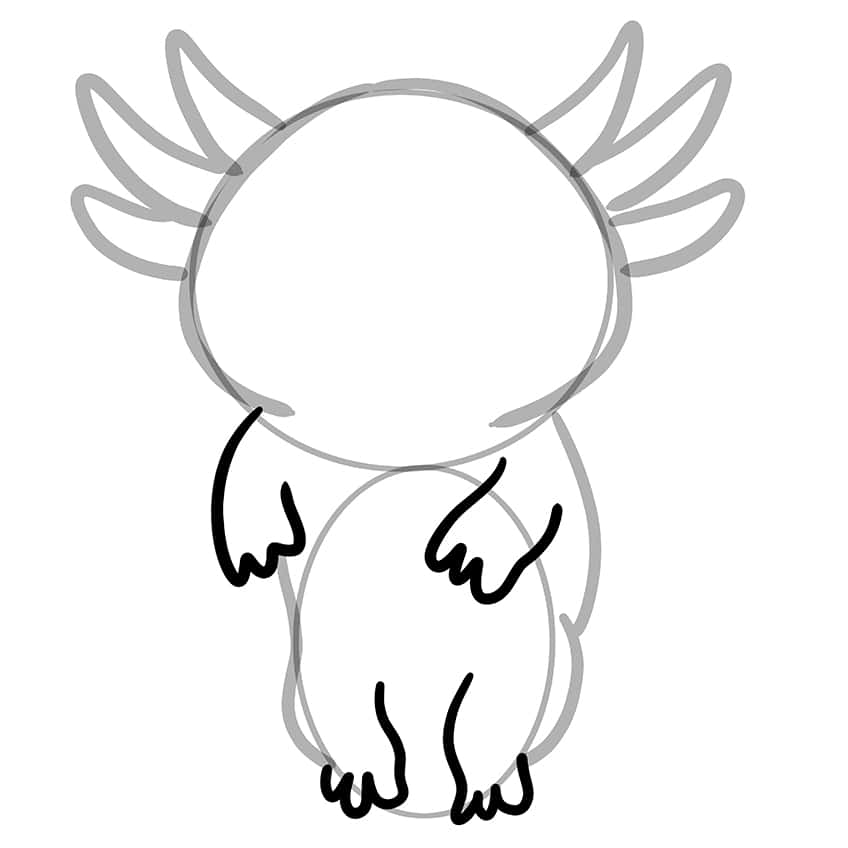
Step 7: Add the Dorsal Fin to Your Axolotl Drawing
Below the feet, draw the outflowing dorsal fin. Once you have finished this, go ahead and remove any unnecessary construction lines.

Step 8: Draw the Tail
Within the previously drawn dorsal fin, draw the sharp end tail. Within the head, draw the two large oval eyes and the mouth.

Step 9: Begin to Color Your Easy Axolotl Drawing
Apply an even coat of peach paint using a fine, sharp brush to cover the entire axolotl uniformly.

Step 10: Continue With the Secondary Color Coat
Continue using the same brush and a dark shade of orange paint to evenly coat the horns and the dorsal fin.
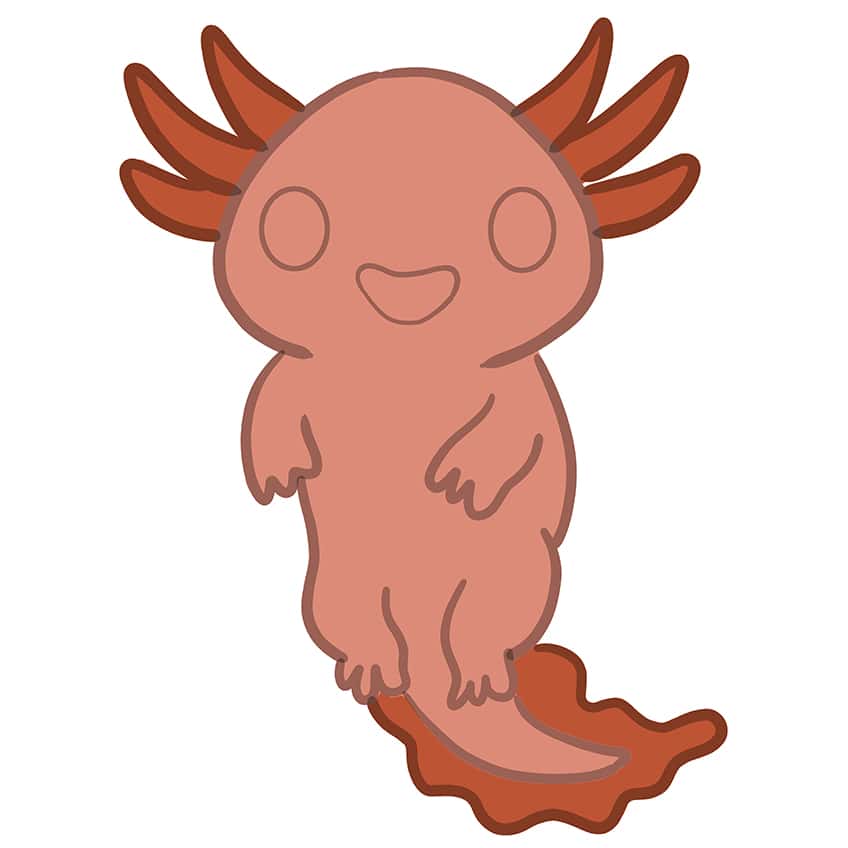
Step 11: Color the Facial Features
Begin to evenly coat the eyes and mouth of your axolotl sketch, using a thin brush and black paint.

Step 12: Shade Your Easy Axolotl Drawing
Apply gentle shading and define the features around the face and main body of the axolotl using a small, soft brush and black paint.

Step 13: Highlight the Axolotl
Apply white paint with a small, soft brush, adding multiple strokes along the head, hands, legs, and tail to create highlight points.

Step 14: Shade the Horns and Dorsal Fin
Utilize a small, soft brush and black paint to incorporate shading within each horn and along the edges of the dorsal fin. Use a blending brush to diffuse the shading. Employ a small, soft brush and white paint to introduce light highlights onto the horns.
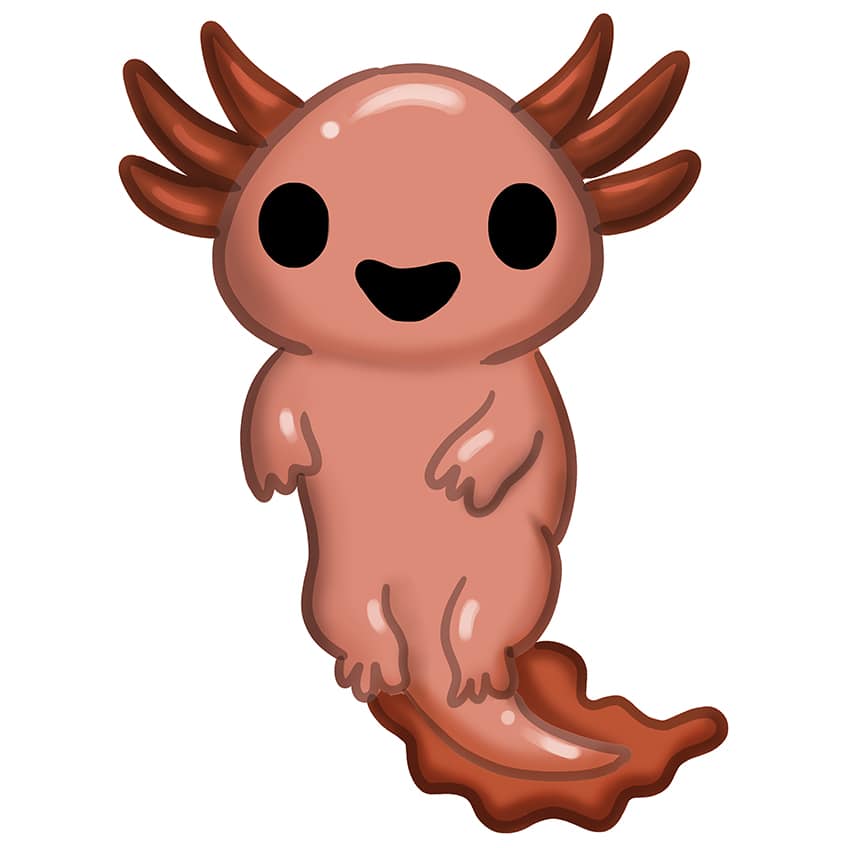
Step 15: Complete the Facial Features on Your Axolotl Sketch
Use a thin brush and white paint to create a gleaming oval within each eye. Afterward, switch to orange paint to add color to the tongue within the mouth and the two cheek spots.
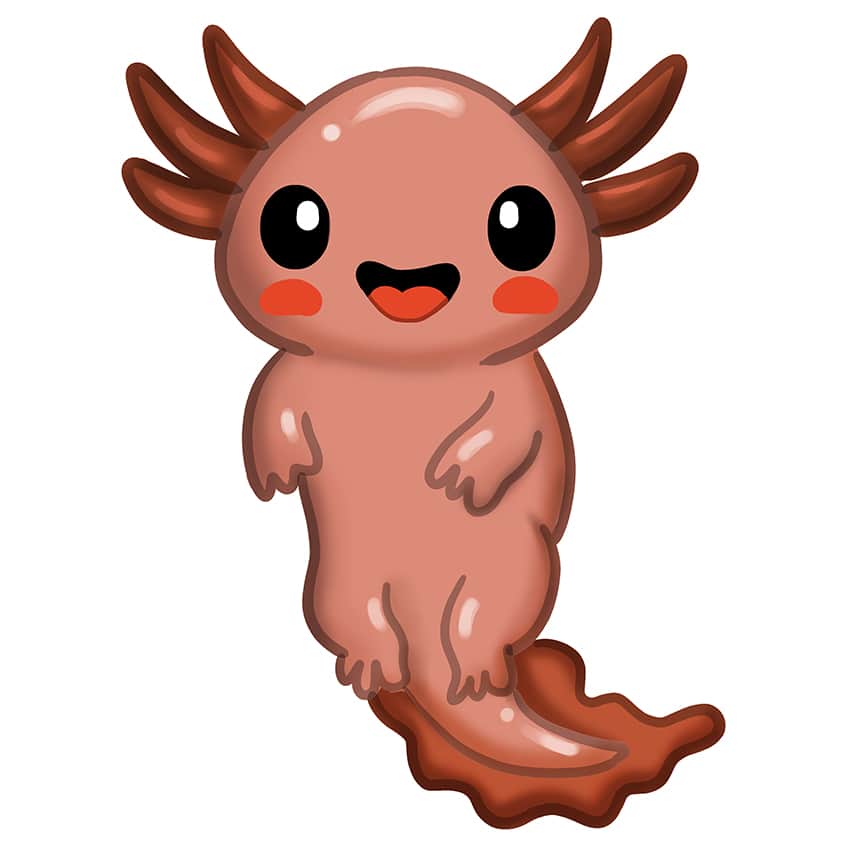
Step 16: Finalize Your Easy Axolotl Drawing
As the final touch in this drawing tutorial, take a fine, sharp brush and black paint to delicately trace the outlines of the axolotl. This step will bring definition and polish to your artwork, ensuring that every detail stands out.

Congratulations on completing our drawing tutorial on how to draw an axolotl! Your dedication and artistic effort truly shine through in your masterpiece. It’s inspiring to witness the creative journey you’ve undertaken, and the adorable axolotl you’ve brought to life is a testament to your talent. Keep exploring and expressing yourself through art – the world is richer with your unique creations. Well done, and here’s to many more artistic adventures ahead!
Frequently Asked Questions
How Can You Add Texture to an Axolotl Drawing to Make It More Lifelike?
Use fine lines and subtle shading to add texture to the axolotl’s skin. Consider incorporating small details like spots or speckles to mimic the natural markings found on axolotls.
How to Add Color to My Axolotl Drawing to Enhance Its Vibrant Appearance?
Use bright and cheerful colors to capture the axolotl’s natural vibrancy. Pay attention to the specific color variations, such as pink, beige, or golden hues, and experiment with shading to create a realistic and lively representation.
Matthew Matthysen is an educated multidisciplinary artist and illustrator. He successfully completed his art degree at the University of Witwatersrand in South Africa, majoring in art history and contemporary drawing. The focus of his thesis was to explore the philosophical implications of the macro and micro-universe on the human experience. Matthew uses diverse media, such as written and hands-on components, to explore various approaches that are on the border between philosophy and science.
Matthew organized various exhibitions before and during his years as a student and is still passionate about doing so today. He currently works as a freelance artist and writer in various fields. He also has a permanent position at a renowned online gallery (ArtGazette) where he produces various works on commission. As a freelance artist, he creates several series and successfully sells them to galleries and collectors. He loves to use his work and skills in various fields of interest.
Matthew has been creating drawing and painting tutorials since the relaunch in 2020. Through his involvement with artincontext.org, he has been able to deepen his knowledge of various painting mediums. For example, watercolor techniques, calligraphy and lately digital drawing, which is becoming more and more popular.
Learn more about Matthew Matthysen and the Art in Context Team.
Cite this Article
Matthew, Matthysen, “How to Draw an Axolotl – A Step-by-Step Drawing Guide.” Art in Context. December 7, 2023. URL: https://artincontext.org/how-to-draw-an-axolotl/
Matthysen, M. (2023, 7 December). How to Draw an Axolotl – A Step-by-Step Drawing Guide. Art in Context. https://artincontext.org/how-to-draw-an-axolotl/
Matthysen, Matthew. “How to Draw an Axolotl – A Step-by-Step Drawing Guide.” Art in Context, December 7, 2023. https://artincontext.org/how-to-draw-an-axolotl/.


